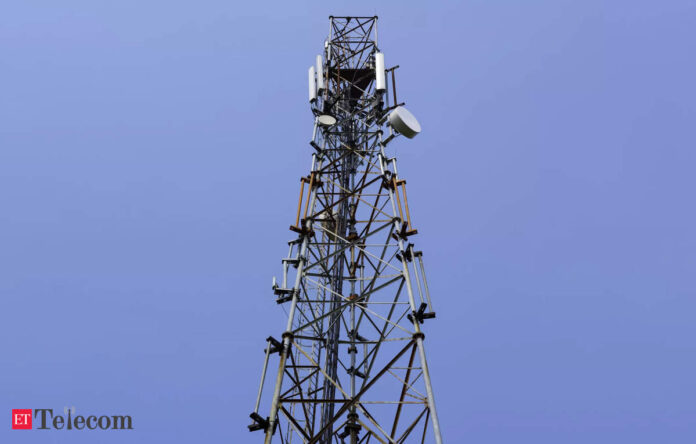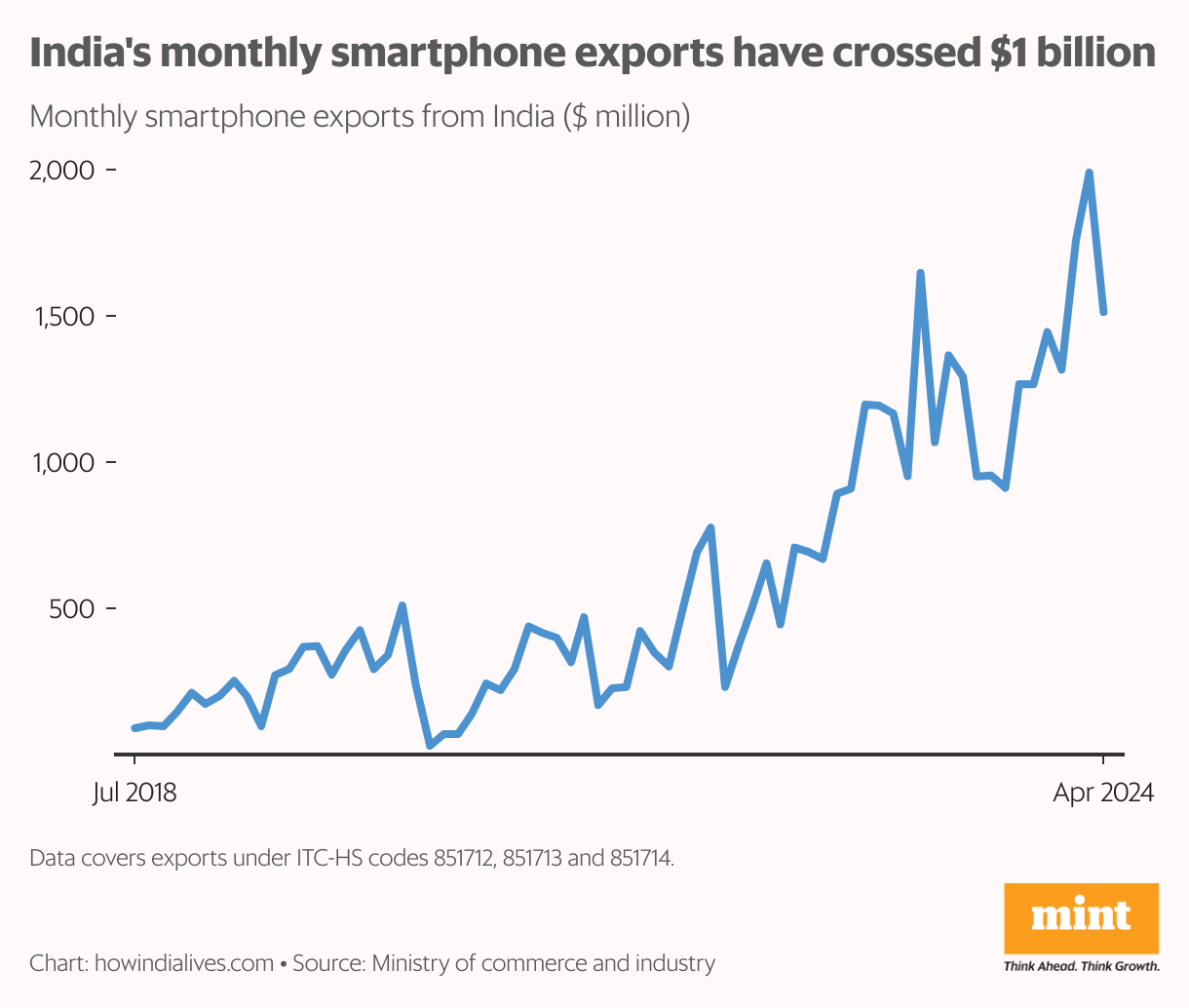
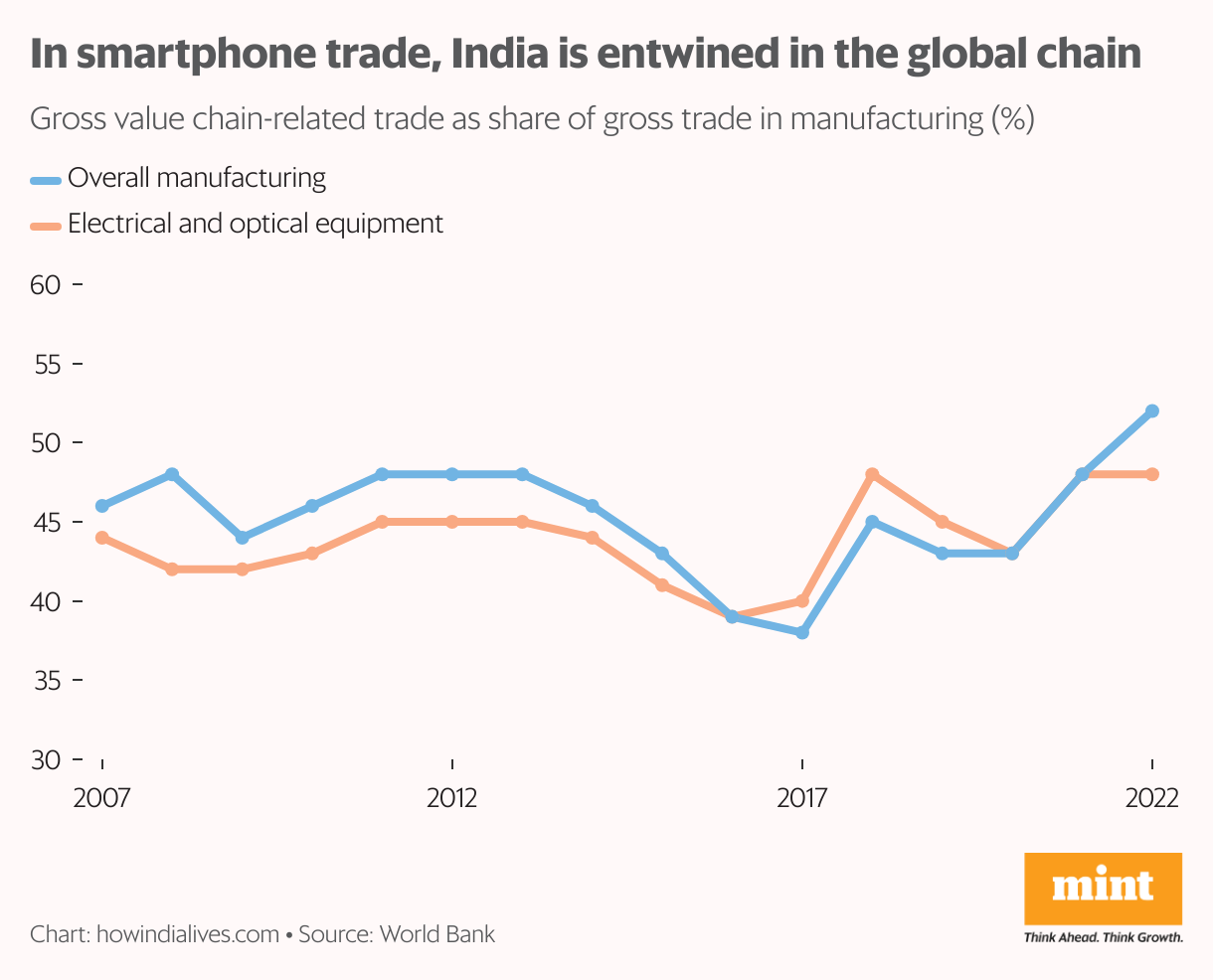
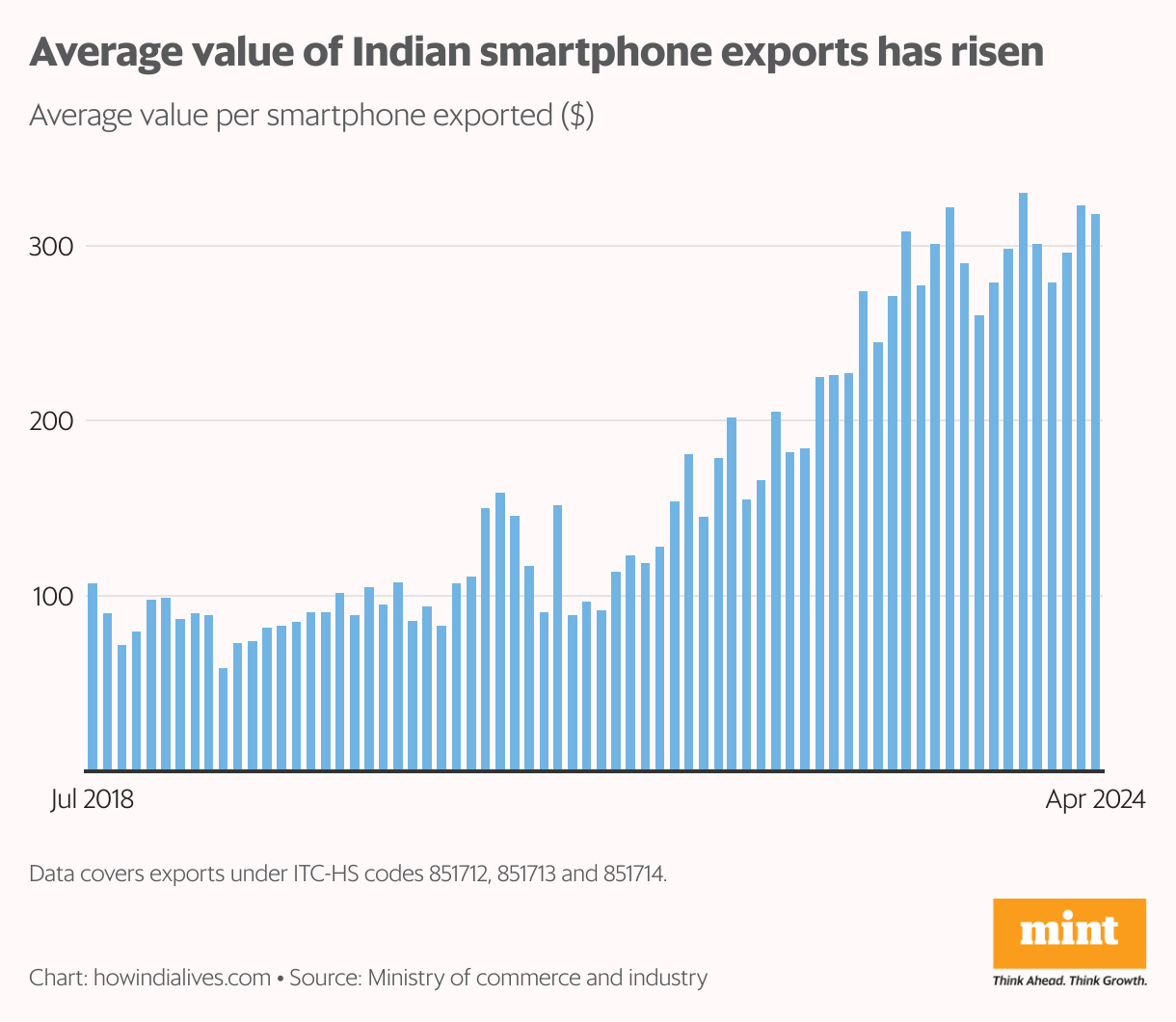
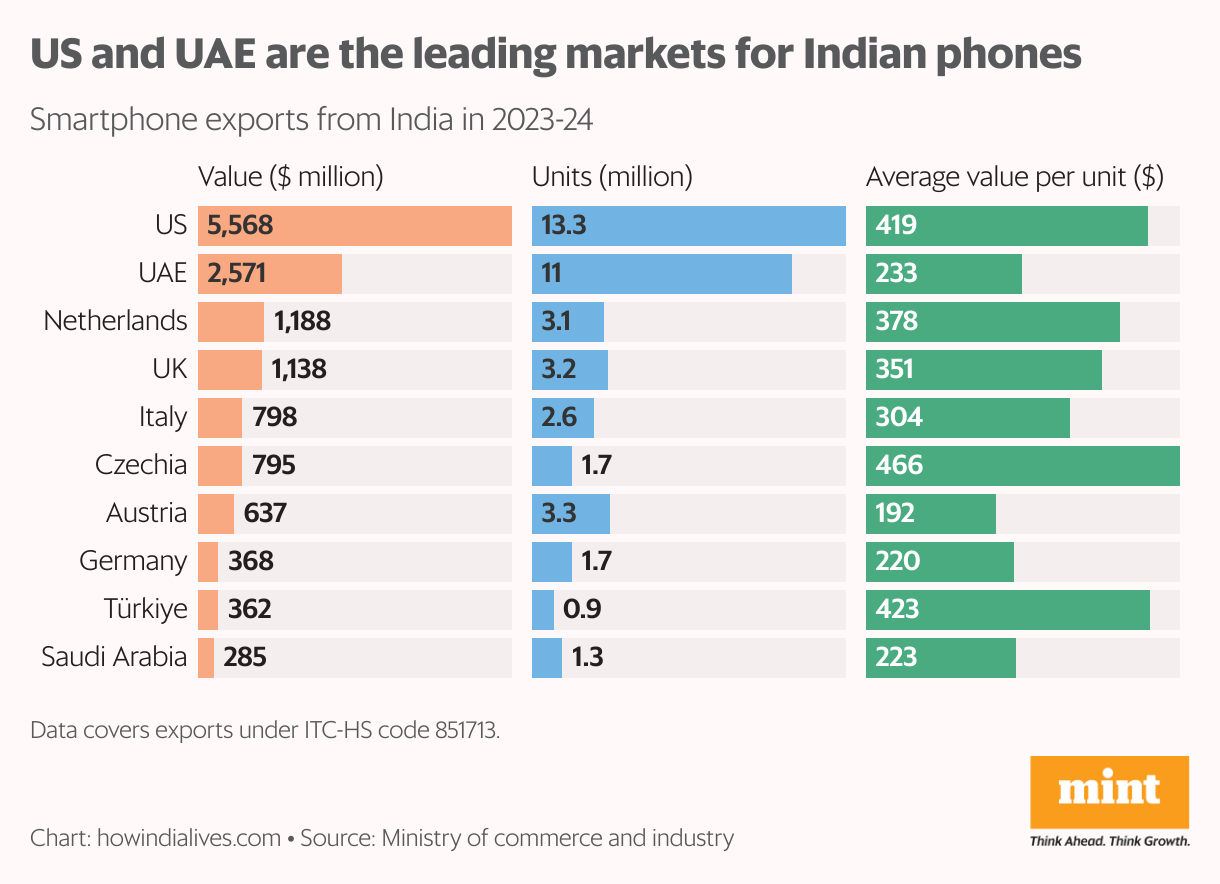
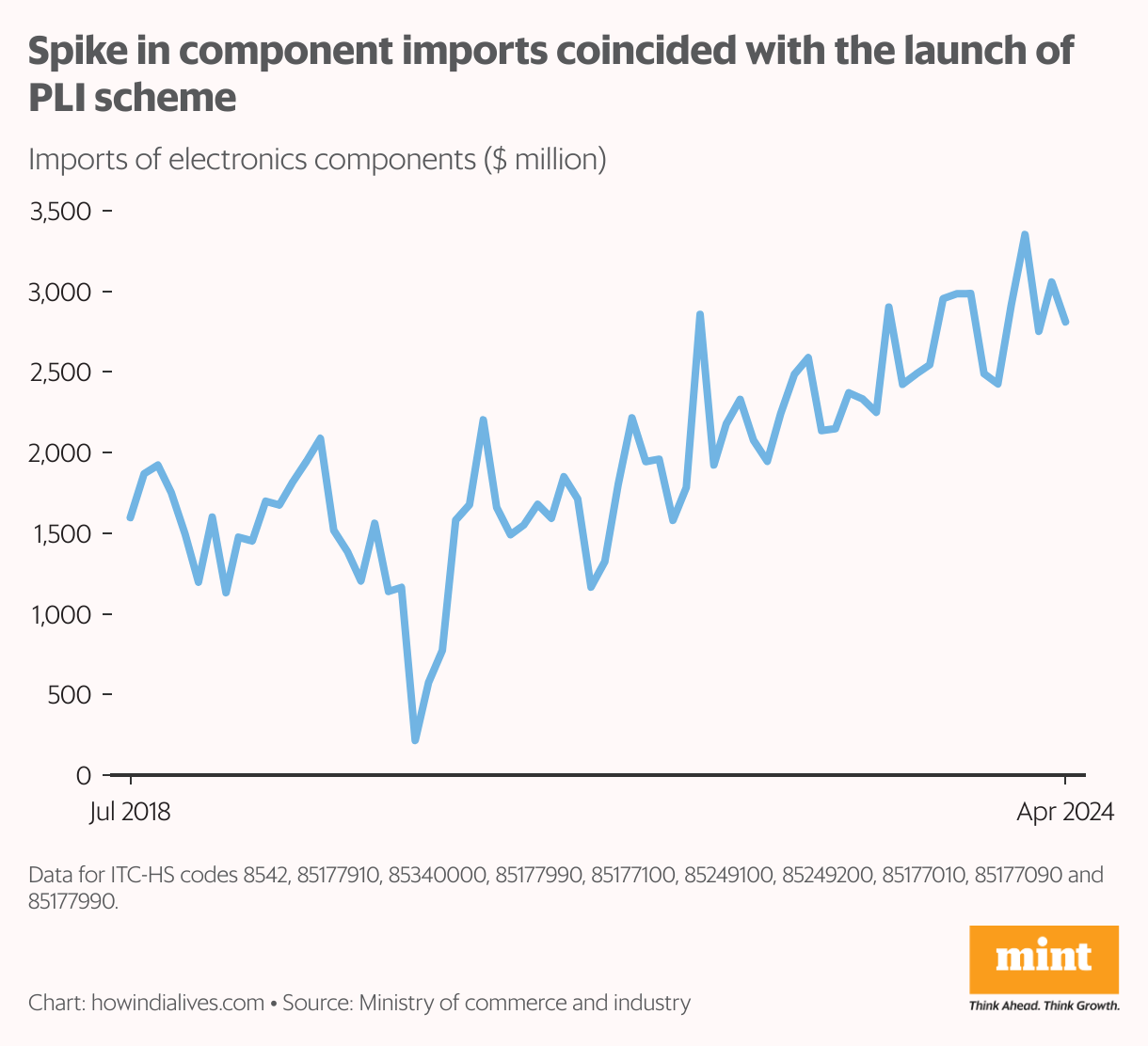
In Short:
In 2023-24, India’s smartphone exports rose to over $15 billion, mainly due to Apple’s manufacturing. However, India remains reliant on importing components for smartphones. While exports increased in volume and average value, much of the gain comes from assembly rather than manufacturing. The US is now India’s largest market, but imports of smartphone components also surged, highlighting the need for further development in local manufacturing.
India’s Smartphone Exports Hit New Heights
**India** is making waves in the global smartphone market! In the fiscal year 2023-24, the nation’s smartphone exports skyrocketed to over **$15 billion**, a significant jump from **$11 billion** the previous year, according to recently released government data. A notable portion of this increase can be attributed to **Apple**, whose manufacturing operations in India are thriving. By early 2024, India’s exports were averaging an impressive **$1.6 billion** every month.
Still on the Rise, But Not Yet a Hub
However, **India** is still far from being a major smartphone manufacturing hub like **China**. The country is heavily reliant on imports for many components needed to assemble these devices.
The surge in smartphone exports began accelerating in the latter half of **2020**, and by late **2022**, exports crossed the **$1 billion** mark each month. Reports indicate that **Apple** assembled approximately **14%** of its iPhones, valued at **$14 billion**, in India last year. This impressive growth can be largely credited to the government’s **Production-Linked Incentive (PLI)** scheme, initiated in **2020**, which offers subsidies to companies that meet specified production targets.
Connecting the Dots Globally
It’s important to note that global electronic manufacturing isn’t concentrated in one location. Instead, it’s a web of interconnected countries. Indian manufacturing must integrate more into these ‘global value chains.’ According to the **World Bank**, about **50%** of India’s total gross manufacturing trade is related to global value chain activities. While the share is slightly lower in the electrical and optical equipment sector, it underscores how deeply intertwined this trade is. For smartphones, Indian manufacturers are still leaning on imports for crucial components instead of producing them domestically.
Value Surge in Exports
The boost in **India’s** smartphone exports is also remarkable in terms of volume. In 2023-24, India exported approximately **52 million** smartphones, an increase from **49 million** in 2022-23 and **44 million** in 2019-20. More compelling is the drastic increase in the average value of these devices, which rose from **$85** per unit in 2019-20 to an impressive **$296** per unit in 2023-24.
This value increase is undoubtedly linked to **Apple** emerging as a key player in smartphone exports from India. From **iPhone 12** to **iPhone 15**, various models are now assembled here, although the high-end **Pro** and **Pro Max** models are not produced locally yet. Reports indicate **Apple’s** ambition to manufacture a quarter of its iPhones in India within the next few years. Furthermore, **Apple** is also contemplating shifting some of its **iPad** and **AirPods** manufacturing to India.
Deepening Ties with the U.S.
In 2023-24, around a third of **India’s** smartphone exports—approximately **$5.5 billion**—were sent to the **U.S.**, translating to around **13 million units**. This marks a dramatic increase from 2019-20 when exports to the U.S. were around **$100 million**. Back then, **India’s** primary market for mobile phone exports was the **United Arab Emirates**, with exports worth **$2 billion**, followed closely by **Russia** at **$496 million**.
While the UAE remains India’s second-largest market, **Russia** has fallen out of the top 10, replaced by various European nations. Interestingly, the average export value of a smartphone varies significantly depending on its destination; for instance, in 2023-24, the average value ranged from **$192** for **Austria** to **$419** for the **United States**.
The Import-Export Paradox
Despite soaring exports, a 2023 paper by **Rahul Chauhan**, **Rohit Lamba**, and **Raghuram Rajan** highlights that imports of smartphone components have also seen a significant rise, indicating that India continues to function primarily as an assembly hub. In 2023-24, imports of circuits and other electronic components reached an eye-watering **$33 billion**, more than double the figure for finished exports.
While these components may also be utilized in other electronic devices, the correlation between the surge in imports and the incentives provided under the PLI scheme suggests that PLI-linked manufacturers are driving this import trend. Although operating mainly as an assembly hub isn’t inherently negative, it does indicate that **India** has more work to do in capturing a larger share of the global electronic components market.
Note: For more detailed insights, visit How India Lives, a comprehensive database and search engine for public data.



